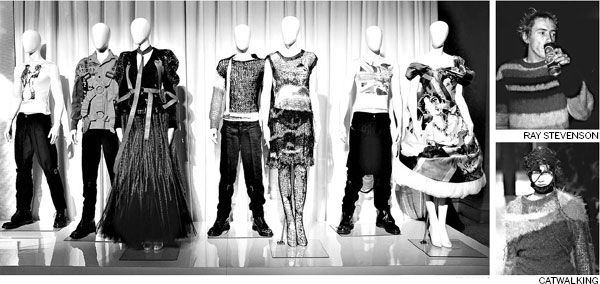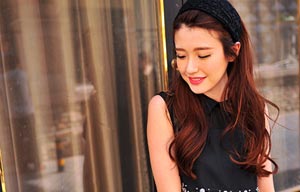Punk's anti-style culminates in haute couture
 |
|
Examples of punk's fashion legacy will go on display at New York's Metropolitan Museum. Johnny Rotten, top right, in 1976; a Junya Watanabe line. Joe Schildhorn / Bfanyc.com |
Everyone loves a uniform. In both the mainstream and the counterculture, they connote order and authority. They shape the story. They make things easy. For the wearer, they stand in for having to speak. For the observer, they serve as shorthand.
They are also constraints, of course.
Punk, in its original incarnation, in England in the 1970s, was intended to be an angry rejoinder to all that. Skinheads, teddy boys, mods, rockers: they all had a comprehensible, consistent look. Punks scrambled it all, cutting it to pieces and stitching it together in new ways. It was a raised middle finger to the long legacy of the uniform - except for the fact, of course, that it was one itself.
The uniform of no uniform became punk's loudest and most lasting aesthetic legacy, probably to its detriment. It was an easy caricature, a readily reproducible expression of working-class angst.
"Punk: Chaos to Couture," the exhibition at the Metropolitan Museum of Art in New York on view starting May 9, connects the dots between punk's anti-formal innovations and high fashion's borrowings - or outright copyings - of them.
But the title is a bit misleading. Certainly decay and disorder were central to punk's ideology, but the chaos was always controlled, and the chaos was always couture. Punk may have been a deconstruction, but it wasn't an accident.
Juxtaposing the old garments with the tributes, as the exhibition does, paints the punk items as found gems rescued and resuscitated by keen-eyed designers with traditional skill sets - an eruption of happenstance into the mainstream. But punk's own rule book - its costume of anarchy - was plenty powerful before anyone was looking. The desecration of logos and images, the deliberately shoddy construction, the mixing of references, the emphasis on hard as well as soft - these were key tenets of the style that demanded adherence. They were styles to wear, and also models for living.
And these visions moved fast, creating looks that settled in at different intensity levels on either side of the Atlantic. In New York, the dominant models were the morose, dry-wit sartorialism of Richard Hell, who famously stenciled the phrase "please kill me" on a T-shirt, or the burnout chic of the Ramones, with their black leather jackets and airtight ripped jeans. Understated and tattered, they were surprisingly elegant, communicating a lot with only a few gestures.

























